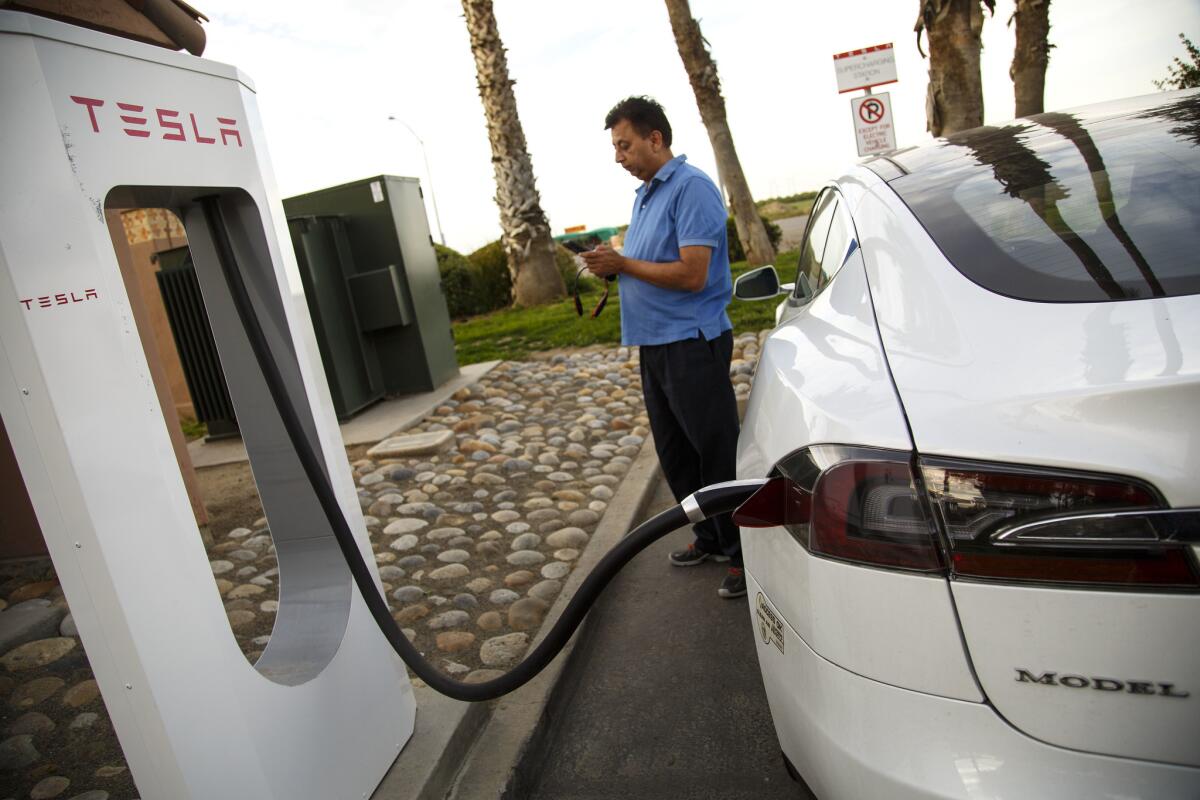Tesla will start charging money to use its supercharging stations

Electric car maker Tesla Motors Inc. has decided to stop offering unlimited free use of its 734 fast-charging stations worldwide, just months before the Elon Musk-led company is scheduled to start selling a mass-market electric car.
Tesla said cars ordered after Jan. 1, 2017, and delivered before April 1 will get roughly 1,000 milesâ worth of credits each year for use at the Supercharger stations. But after the credits are used, Tesla said, owners will have to pay fees that the automaker didnât detail Monday. Vehicles ordered or sold on or before Jan. 1 would still get unlimited free charging.
The move means that those who buy Teslaâs mass-market $35,000 Model 3, which is due to go on sale in the second half of next year, wonât get unlimited free charging. Tesla has more than 300,000 reservations for the cars, and if all those owners started using the charging stations for free, that could get expensive for Tesla.
Chief Executive Musk has said previously that Model 3 owners would have to pay to use the charging stations.
The Palo Alto, Calif., company wouldnât say specifically how much its fees will be, but it said charging would cost less than filling a comparable gasoline car. The company said it will release fee details later this year and that prices could fluctuate over time and vary by regional electricity costs.
Still, the move shouldnât hurt Tesla sales because the company remains the market leader for electric vehicles, and owners donât use the stations that often, said Tasha Keeney, analyst for the industrial innovation fund at ARK Invest. She said Tesla owners charge their cars at home more than 90% of the time and use the Superchargers mainly for trips or when they need extra range.
At the average U.S. electricity price of 12.9 cents per kilowatt-hour, it would cost $9.68 to fully recharge a Tesla Model S with a 275-mile battery at home.
Electric vehicles âare the way forward. Tesla is in a really good position with 30% of the market. We donât see that changing,â said Keeney, whose fund has holdings in Tesla.
Teslaâs stations are used only 5% to 10% of the day, Keeney said, but many Tesla owners use them as a social gathering place to talk with each other.
The Supercharger stations can give the cars 170 miles of range in half an hour. A 30-amp public charging station can fuel only 10 miles of range in half an hour, Tesla says on its website. In the U.S., charging stations are located the nationwide, but many are concentrated in population centers along the East and West coasts.
The stations were set up to enable long-distance travel by Tesla electric cars. The companyâs Model S sedan can go between 219 and 302 miles per charge depending on battery and software configurations.
Tesla said that the change will enable it to expand its network of chargers and that it will not make a profit from the charging stations.
ALSO
The financial world is betting Clinton will win. What if itâs wrong?
Hereâs why pot growers are paying millions for old greenhouses
Stores hustle to get their holiday goods as fallout from the Hanjin shipping mess continues
UPDATES:
3:45 p.m.: This article was updated with analyst comments and background information.
This article was originally published at 8:25 a.m.






